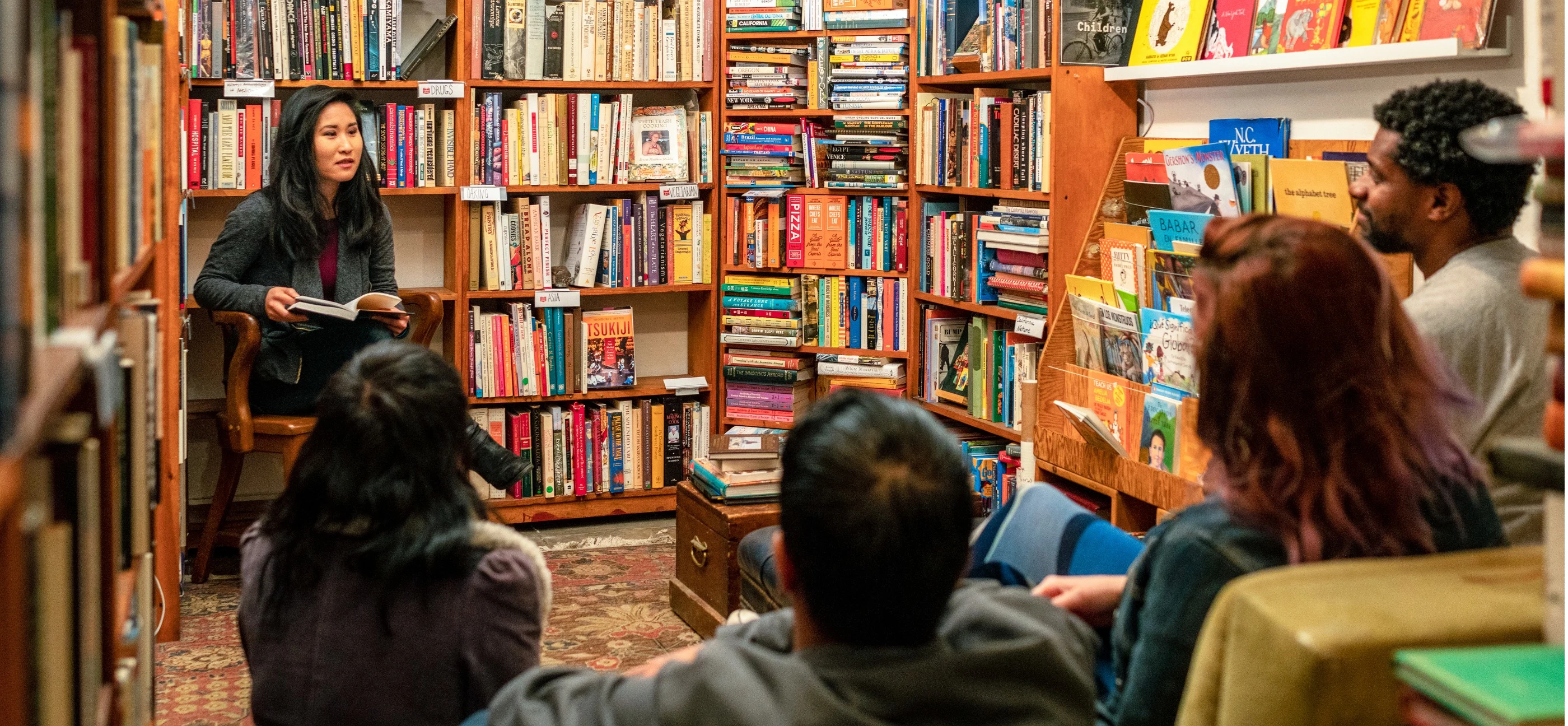
As big box bookstores Barnes & Noble and Borders spread across the landscape in the 1990s, retail observers sounded the death knell for small, independent booksellers. But they had no idea of the onslaught that was coming.
Amazon.com launched in 1995, offering customers seemingly unlimited inventory without the need to step foot in a bookstore; and then Amazon launched the Kindle e-book service in 2007, challenging the very idea of a physical book.
“Not only had the traditional buying channels fundamentally shifted, but the core product—the printed book—had come under threat,” says Ryan Raffaelli, a professor in the Organizational Behavior Unit at Harvard Business School. “All the ingredients were there for the independent sector to see the end of its days.”
Something miraculous started happening in 2009, however. After falling for decades, the number of independent bookstores started to rise, climbing 49 percent in the next decade to nearly 2,500 stores nationwide.
The resurgence has lessons for other industries. “Indie bookstores have defied the odds,” Raffaelli says. “What happened in this sector has potential implications for other brick-and-mortar stores attempting to compete in the age of Amazon.”
What happened in this sector has potential implications for other brick-and-mortar stores attempting to compete in the age of Amazon.
All independent bookstores are unique, but Raffaelli has identified common strengths behind their recent surge in a new white paper, Reinventing Retail: The Novel Resurgence of Independent Bookstores, published this month.
A bookstore anthropologist
Since 2012, Raffaelli has examined how indie bookstores have survived and thrived in the digital era. The research project is part of a broader set of studies Raffaelli has conducted on mature industries, such as Swiss watchmakers and pencil makers, that have been able to reinvent themselves in the wake of radical technological change. He calls this phenomenon “technology reemergence.”
Over the past eight years, he has visited bookstores in 26 states, conducted hundreds interviews and focus groups with booksellers, authors, and publishers, and scoured 30 years of news articles to understand how bookstores have phoenixed themselves from the ashes. He even attended a course on how to open an independent bookstore.
“As a field researcher, I am bit like an anthropologist for business,” he says. “I embed myself into an industry for multiple years to understand the nuances of what’s happening, and I try to uncover unexpected patterns that can be difficult to predict using traditional statistical models.”
Three C’s to resurgence
Raffaelli distills the resurgence of the indies down to three main points: Community, Curation, and Convening.
Community: As longtime community stalwarts, bookstores have been at the vanguard of the “buy local” movement, pioneering events such as Small-Business Saturday, and making their customers feel virtuous about spending money in their own neighborhoods. “It’s almost like a social movement,” says Raffaelli, who says indie bookstores are “anchors of authenticity in an ever-increasing digital and disconnected world.” The notion goes beyond a bond with customers to include other important community actors, such as schools, chambers of commerce, and civic organizations, reinforcing the social fabric and engendering a strong sense of customer and community loyalty.
Curation: Despite the increasing sophistication of online algorithms, online platforms have been unable to replicate the knowledge and passion of indie bookstore employees, says Raffaelli. “Many booksellers are voracious readers and serve as trusted guides who can point their customers to new genres or up-and-coming authors they might not have encountered,” he says. “Customers leave the store excited and then want to come back.” By contrast, he says, Amazon’s reputation as “the everything store” can sometimes work against it, overwhelming consumers with too many options and an impersonal experience.
Convening: Indie bookstores are increasingly serving as points for convening, expanding beyond author events to host book groups, children’s story hours, birthday parties, music events, knitting circles, culinary demonstrations, and other events. Several stores Raffaelli visited reported staging over 500 events a year. “Bookstores have always been a place where people could convene and have a conversation about the issues of the day,” he says, adding that bookstore owners are increasingly seeing their competition not as Barnes & Noble, but as Netflix and other entertainment apps that tie people to their couches. “Retailers who succeed are able to create a unique experience that consumers see as time well-spent. Not only do such events get people into the store—the number one goal of every retailer—but events open the door for readers to connect with other bibliophiles, creating more demand for their products.
Ironically, in their efforts to build community, bookstores have increasingly embraced the online world as a tool to extend their reach. “Bookstores have become sophisticated at building a social media presence,” Raffaelli says. “Many owners have hired online specialists to extend the conversation outside the four walls of the bookstore itself.”
Victims of their own success?
As the number of indie bookstores has grown over the past decade, they have also encountered difficulties that could limit future growth. In some ways they’ve become victims of their own success, says Raffaelli, reinvigorating neighborhoods only to see their own rents rise. In addition, they’ve struggled to raise wages for their ever more important employees, surviving on razor-thin margins from book sales.
One way stores have dealt with those challenges is by curating an additional stock of higher-margin items, such as gifts and clothing, that appeal to their literate customers to raise additional revenue. “Canvas tote bags, t-shirts, and literary-themed socks with quotes from the likes of Melville and Shakespeare have become ubiquitous in many stores,” Raffaelli says.
Lessons for reinventing local retail
Even as indie bookstores continue to reinvent themselves, their growth over the past decade offers several lessons for other independent retailers, Raffaelli says. By leveraging community ties, local businesses can appeal to consumers’ desire for authenticity and connection in the internet age.
“In today’s digital world, consumers are turning to local retailers to help them engage and build deeper relationships in their neighborhood. It’s one way to successfully compete with Amazon,” Raffaelli says. “Indie bookstores offer a story of hope and symbolize the power of community as a source of competitive advantage.”
Raffaelli will deliver the opening keynote address at the American Bookseller’s Association’s 15th annual Winter Institute conference in Baltimore on January 22. His talk, “Reinventing the Store: Achieving Growth in the Face of New Business Risks” will feature findings from his study on the bookstore sector.
A new chapter for booksellers
Professor Ryan Raffaelli teams up with Porter Square Books in Cambridge, MA – one of the hundreds of bookstores he’s studied – to explore industries facing shifts in their business models and how they adapt. Independent bookstores provide a story of hope by focusing on core values that include community, curation, and convening.
Independent bookstores provide a story of hope by focusing on core values that include community, curation, and convening. (Video by Amelia Kunhardt)
About the Author
Michael Blanding is a writer based in Boston.
[Image: georgeclerk]

